Introduction
Bai Ji Mo, a beloved staple of Chinese street food and home cooking, is a type of fluffy yet chewy flatbread that serves as the foundation for countless meals. Originating from Shaanxi Province, this unleavened or slightly leavened bread has captured hearts across China and beyond with its versatility and comforting texture. Whether stuffed with savory stewed meat, fried eggs, or fresh vegetables, Bai Ji Mo offers a blank canvas for culinary creativity. This article delves into the art of making Bai Ji Mo at home, providing a detailed, beginner-friendly recipe that honors tradition while adapting to modern kitchens.
The Cultural Significance of Bai Ji Mo
Before diving into the recipe, it’s worth understanding why Bai Ji Mo holds a special place in Chinese cuisine. Historically, this flatbread was a portable, non-perishable food for travelers, soldiers, and farmers. Its simple ingredients—flour, water, and sometimes yeast—made it accessible even in resource-scarce regions. Today, it remains a symbol of rustic charm, often found in bustling night markets, hole-in-the-wall eateries, and family kitchens. The name “Bai Ji Mo” translates to “white-cut flatbread,” referencing its pale, unadorned appearance and the technique of slicing it open to fill with ingredients.
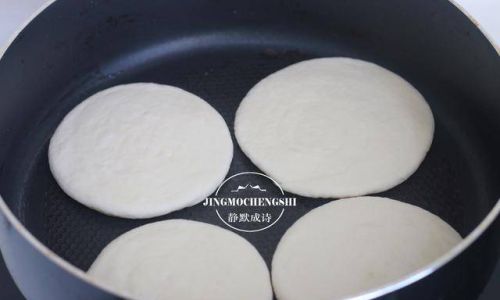
Ingredients You’ll Need
To recreate this culinary treasure, gather the following ingredients. Note that measurements are provided in both metric and imperial units for accessibility:
-
For the Dough:
- 500g (4 cups) all-purpose flour (or bread flour for chewier results)
- 5g (1½ tsp) instant dry yeast (optional, for a slightly leavened texture)
- 10g (2 tsp) granulated sugar
- 5g (1 tsp) salt
- 280ml (1¼ cups) lukewarm water (adjust as needed)
- 15ml (1 tbsp) neutral oil (vegetable or canola)
-
For Cooking:
- 30ml (2 tbsp) neutral oil (for pan-frying)
- Optional: 1 tbsp sesame seeds (for garnish)
Equipment Checklist
- Large mixing bowl
- Wooden spoon or dough whisk
- Clean work surface (for kneading)
- Rolling pin
- Cast-iron skillet or non-stick pan
- Pastry brush
- Kitchen towel (for keeping dough warm)
Step-by-Step Instructions
Activating the Yeast (If Using)
If you prefer a slightly leavened Bai Ji Mo with a softer crumb, activate the yeast first. In a small bowl, combine the lukewarm water (around 35°C/95°F), sugar, and yeast. Stir gently and let it sit for 5–10 minutes until frothy. This step confirms the yeast is active. For a traditional, denser texture, skip the yeast and use 260ml (1⅛ cups) water instead.
Mixing the Dough
In a large bowl, whisk together the flour and salt. Create a well in the center and pour in the yeast mixture (or water). Stir with a wooden spoon until a shaggy dough forms. If the dough seems dry, add 1 tbsp of water at a time. Avoid overhydrating, as this leads to sticky dough.
Kneading the Dough
Transfer the dough to a lightly floured surface. Knead for 8–10 minutes using the heel of your hand to push the dough away, then fold it back onto itself. The dough is ready when it becomes smooth, elastic, and springs back when poked. A well-kneaded dough will pass the “windowpane test”: stretch a small piece until translucent without tearing.
First Rise (Optional)
If using yeast, place the dough in a lightly oiled bowl, cover with a damp cloth, and let it rise in a warm spot (25–30°C/77–86°F) for 1–1.5 hours, or until doubled in size. For unleavened Bai Ji Mo, skip this step and proceed to shaping.
Portioning the Dough
Gently deflate the risen dough and divide it into 8–10 equal pieces (about 80g each). Roll each piece into a smooth ball, tucking the seams underneath. Cover with a kitchen towel to prevent drying.
Shaping the Flatbreads
Take one dough ball and flatten it with your palm. Using a rolling pin, roll it into an oval shape, approximately 10cm (4 inches) long and 6mm (¼ inch) thick. Brush the surface lightly with oil, then fold it in half lengthwise to create a half-moon shape. Press the edges gently to seal. This folding technique creates distinct layers inside the bread.
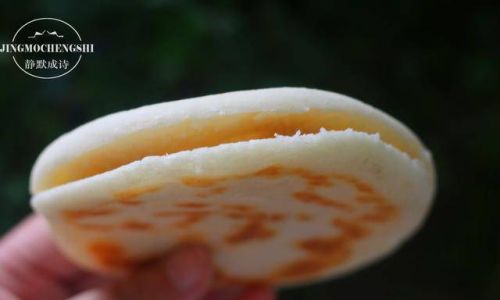
Rolling Out the Final Shape
On a lightly floured surface, roll the folded dough into a teardrop shape, about 15cm (6 inches) long and 4mm (⅛ inch) thick. The tapered end should be thinner than the base. This shape ensures even cooking and a signature flaky texture.
Cooking the Bai Ji Mo
Heat a cast-iron skillet or non-stick pan over medium heat. Brush the surface lightly with oil. Place one flattened dough into the pan and cook for 2–3 minutes per side, or until golden-brown bubbles form. Adjust the heat to prevent burning. For a crispier crust, finish by baking in a preheated 200°C (400°F) oven for 3–5 minutes.
Final Touches
Remove the cooked Bai Ji Mo from the pan and brush with a thin layer of oil while still hot. This step enhances shine and softness. If using sesame seeds, sprinkle them on one side before cooking. Stack the finished flatbreads under a kitchen towel to keep them warm and pliable.
Expert Tips for Perfect Bai Ji Mo
- Water Temperature: Use lukewarm water (not hot) to activate yeast without killing it. Cold water slows fermentation, while hot water can destroy yeast cells.
- Kneading Technique: If the dough resists stretching, let it rest for 5 minutes before continuing. This relaxes the gluten, making kneading easier.
- Layering Secret: The oil-brushed fold creates steam pockets during cooking, resulting in flaky layers. Experiment with different oils (e.g., sesame) for added flavor.
- Storage: Cooked Bai Ji Mo can be stored in an airtight container at room temperature for 2 days. Reheat in a steamer or toaster oven to restore softness.
Creative Fillings and Pairings
Bai Ji Mo’s neutral flavor makes it a perfect partner for both savory and sweet fillings. Classic combinations include:
- Rou Jia Mo (Chinese Hamburger): Stuff with slow-cooked spiced pork (La Zhi Rou), chopped cilantro, and pickled vegetables.
- Vegetarian Delight: Layer with scrambled eggs, sautéed mushrooms, and spinach.
- Sweet Treats: Spread with red bean paste or Nutella, or sandwich sliced bananas and honey.
For a complete meal, serve Bai Ji Mo alongside a bowl of hot and sour soup or a refreshing cucumber salad.
Health Benefits and Dietary Adaptations
While traditionally made with white flour, Bai Ji Mo can be customized for dietary needs:
- Whole Wheat Version: Substitute 50% of the flour with whole wheat pastry flour for added fiber.
- Gluten-Free Option: Use a 1:1 gluten-free baking blend, though the texture will be denser.
- Low-Fat: Omit the oil in the dough and cook without brushing oil for a leaner result.
Troubleshooting Common Issues
- Tough Dough: Overkneading or insufficient hydration. Add water gradually and knead until soft.
- Uneven Cooking: Ensure the pan is evenly heated. Rotate the flatbread halfway through cooking.
- Dense Texture: If using yeast, check its expiration date. For unleavened versions, embrace the denser crumb as traditional.
Conclusion
Mastering Bai Ji Mo at home is a rewarding journey into the heart of Chinese home cooking. Whether enjoyed as a quick snack or the star of a meal, this humble flatbread bridges tradition and innovation. Experiment with fillings, shapes, and seasonings to make it uniquely yours. With practice, you’ll achieve the perfect balance of crisp edges, soft layers, and that irresistible aroma of freshly cooked bread. So roll up your sleeves, flour your workspace, and let the comforting scent of Bai Ji Mo fill your kitchen—a testament to the timeless joy of homemade food.

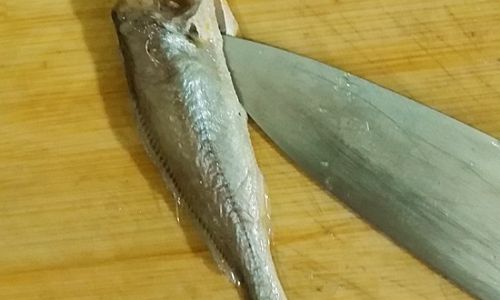
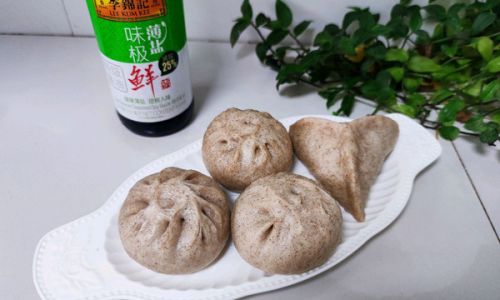
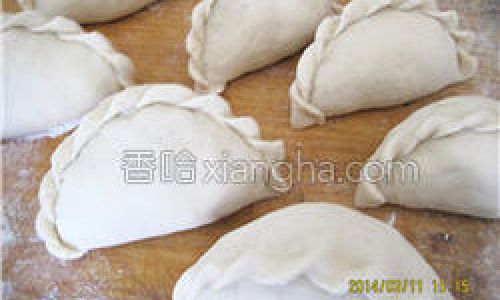
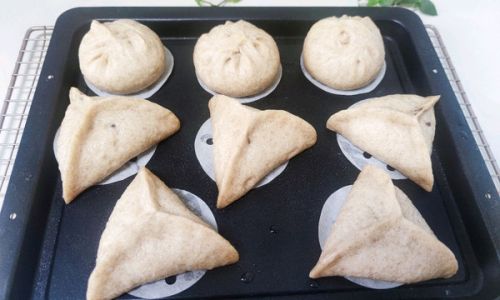
0 comments